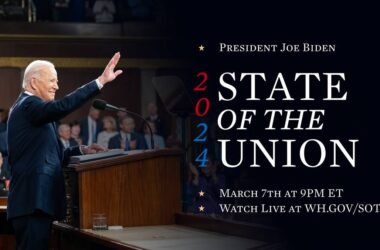
Commentary
By Gene Policinski
Note: This column includes language that may offend, quoted as part of musical lyrics.
First Amendment Center-(ENEWSPF)- As the COVID-19 crisis stretches on, we’re seeing more conflict, more protests and particularly more online rancor in the debate over how — and if — public officials should “open up” society or government restraints on gatherings, from bowling leagues and bars to religious services and retail stores.
The First Amendment’s protection for free speech covers most of what we may say, whether it’s impolite, insulting, biased or uplifting, even commentary or forcefully expressed opinions that most of us would find repulsive or repugnant.
But one area not protected as free speech is called a “true threat,” words that cause a person to fear for their safety or life. In a crisis, we may find things we say are taken in a different context by police, prosecutors and juries than at other, less stressful times.
Unfortunately for those trying to measure their own remarks, setting out a precise definition for what constitutes a true threat has flummoxed even the U.S. Supreme Court. The result is a division of opinion in federal and state courts across the country.
Toss in the new machinations of social media, which remove the element of face-to-face confrontation, but also provide a degree of anonymity — and lack of restraints — and the lines dividing protected and unprotected speech blur even more.
Speech threatening bodily harm made to a specific person standing in front of you while you have a weapon — for example, holding a knife and saying “I have a knife and I’m going to cut your throat” — leaves little doubt that it’s a true threat.
But what if the person at whom those same words are directed isn’t nearby when the remark is made, but sees it hours or days later on social media? What if the speaker sets the words to music, posts the statement as part of a YouTube video and later claims it was just a form of anger control therapy — even if the intended “target” (think you or me) took the threat seriously?
For many years, evidence that a statement could be judged as putting any “reasonable person” in fear was enough to support a conviction in many courts. But in 2015, the U.S. Supreme Court, in Elonis v. United States, focused on the intent of the person making the statement, effectively saying that consideration was important — and perhaps essential — when deciding if the speaker was indeed issuing a “true threat.”
But the high court didn’t set out any means of measuring intent, leaving things hanging. Two years later, Justice Sonia Sotomayor wrote, in Perez v. Florida, where the court refused to reconsider the conviction of a man who threatened to blow up a liquor store, that while “states must prove more than mere utterance of threatening words, some level of intent is required —(and) the Court should also decide precisely what level of intent suffices under the First Amendment,” noting that did not happen in Elonis.
All of that leaves many of us subject to state laws that don’t include a requirement to consider what we might mean when we say it, just how a “reasonable person” would feel about our words. Got enough money or time to get to the Supreme Court? Such a conviction would seem likely to be thrown out.
Not the “bright line” between right and wrong that we should expect to see when it comes to criminal prosecutions.
Case in point: According to Kentucky’s Lexington Herald Leader, Louisville lawyer James Gregory Troutman, 53, was charged April 22 with “terroristic threatening” for two Facebook posts directed at Gov. Andy Beshear.
“Maybe some should ask Beshear in a press conference about his thoughts on William Goebel,” Troutman was reported by police to have said in a post, “For those of you who don’t know the history … it’s a good read.” Goebel, shot to death in 1900, in is the only serving U.S. governor ever assassinated.
Police said Troutman also later posted, in a Facebook exchange about Beshear ordering photos to be taken of license plates of churchgoers flouting social distancing orders, “With any luck the gov will be the one at whom the shooting will be directed.”
Police said Troutman was “threatening to commit a crime likely to result in death or serious physical injury to the Kentucky governor.” But Troutman’s lawyer said the man “didn’t say he was going to kill him.”
If you were sitting on a jury considering the charges against Troutman, a 1969 Supreme Court decision in Watts v. United States might help you decide. In that Vietnam War-era case, a protester was charged with threatening President Lyndon Johnson for telling a rally that “if they ever make me carry a rifle, the first man I want to get in my sights is LBJ.”
The court later decided that Watts “had engaged in a crude form of political hyperbole rather than utter a true threat.” The justices identified what later came to be known as the Watts factors: The context in which the words were spoken, the reaction of those who heard the remarks and the certainty of the remarks.
They noted that Watts made his statements during a political rally, that those who overheard his remarks laughed and his statement was conditional rather than definitive.
Still today, some lower courts use the Watts factors to determine whether speech crosses the line into the realm of true threats, Freedom Forum First Amendment Fellow David Hudson notes.
Another kind of hyperbole: Wishing that a meteor will fall from the sky and injure or kill a certain person may well be what most of us would find hateful and morally wrong, but it’s safely protected under the First Amendment.
On the other hand, the Supreme Court found in 2003, in Virginia v. Black — perhaps its most direct ruling about “true threat” — that the state of Virginia could prosecute people for cross burning intended to intimidate or instill fear in others. Dissenting voices said cross burning is always unprotected speech since it can have no effect other than intimidating others, but the court’s majority did not agree. Again, the intent of the speaker, as in Elonis, rather than the meaning to those receiving the message, was held most significant.
The justices did offer this definition: True threats are “those statements where the speaker means to communicate a serious expression of an intent to commit an act of unlawful violence to a particular individual or group.”
Adding to the conflicted legal views over true threats was the 2019 refusal by the justices to consider an appeal by Jamal Knox, a Pittsburgh rap music artist convicted over lyrics in a song “Fuck the Police,” recorded in 2012 while facing weapon and drug charges. The song named arresting officers and included lyrics saying, “Let’s kill these cops cuz they don’t do us no good / pullin’ out your Glock out ’cause I live in the ‘hood” and “I’ma jam this rusty knife all in his guts and chop his feet … your shift over at 3 and I’m gonna fuck up where you sleep.”
Critics of Knox’s conviction note that other more widely recognized artists have used similar statements in their music without prosecution and that local courts generally don’t understand the role of rap music in urban culture.
Officials cited Knox’s specific identification of the officers and in 2018 the Pennsylvania Supreme Court said his lyrics were threats, not “political, social or academic commentary, nor are they facially satirical or ironic.”
From armed protestors confronting state police officers in the Michigan capitol building to armed revelers at a Texas bar arrested in a SWAT raid, from angry crowds outside a number of gubernatorial residences to violent words on social media, the potential for threating actions and actual violence today is higher than ever.
So how to judge whether your words, expressive conduct (such as marching with signs or weapons) or violent social media posts are protected speech?
Colleagues at the Freedom Forum’s education unit provide a lesson plan — for free — to help you navigate those First Amendment “true threat” waters: In “You Can’t Say That?!” you will learn about restrictions to freedom of speech in public life and the court cases that determined when and why those limits apply.
Bottom line: In the U.S., the First Amendment certainly protects your right to speak. But there’s no absolute protection from the effects of what you say — particularly when those words may put a specific person in fear of injury or death.
Gene Policinski is a senior fellow for the First Amendment at the Freedom Forum, and president and chief operating officer of the Freedom Forum Institute. He can be reached at [email protected], or follow him on Twitter at @genefac








